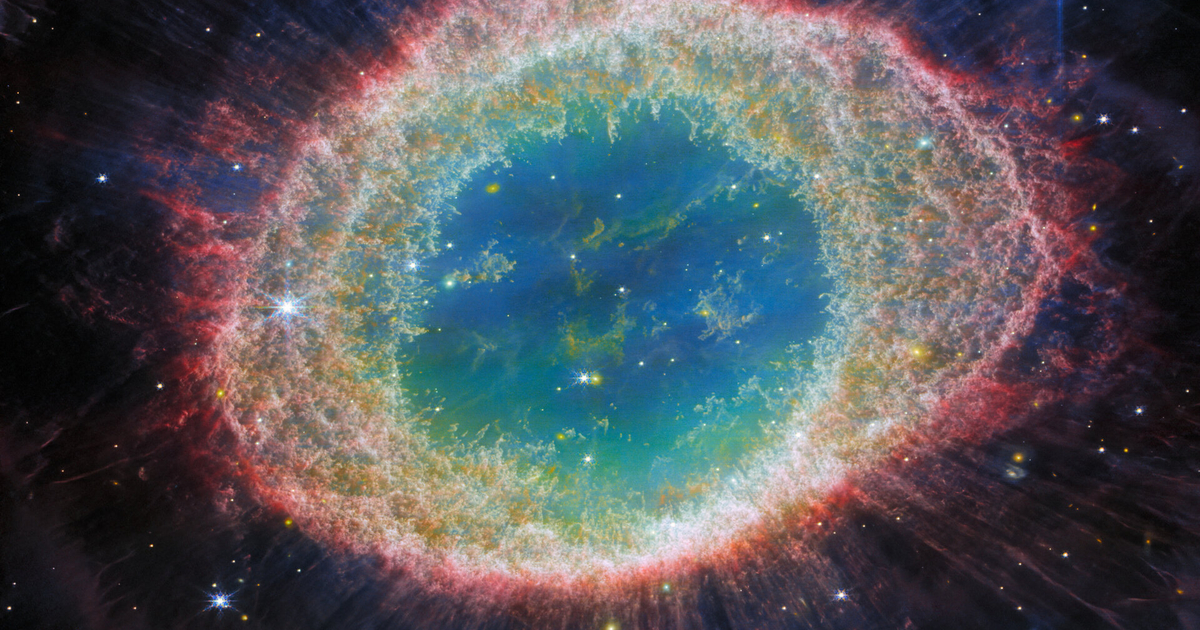The James-Webb Telescope, operating mainly in the infrared, has captured spectacular images of the Ring Nebula, also known as the Lyra Nebula. Responding to its somewhat poetic astronomical code M57 (or NGC 6720), it is part of the family of planetary nebulae, these celestial objects unrelated to any planet, but consisting of a ring of shiny gas ejected by a star (very weak , center) expelling its outer layers. It was discovered by the French astronomers Antoine Darquier de Pellepoix and Charles Messier in 1779, tells us the European Space Agency which revealed the images. It is nearly 2500 light-years from Earth, which is quite close on a cosmic scale.
“The new images offer unprecedented spatial resolution and spectral sensitivity”welcomes the ESA, which specifies that the new image taken by the NIRCam (Near-InfraRed Camera), one of the instruments on board James-Webb, shows “the intricate details of the filamentary structure of the inner ring”. The one captured by the MIRI (Mid-InfraRed Instrument) reveals particular details in the concentric features of the outer regions of the ring.
This nebula “has some 20,000 dense globules, rich in molecular hydrogen. In contrast, the inner region contains very hot gas. The main envelope contains a thin ring of enhanced emission of carbon-based molecules, known as polycyclic aromatic hydrocarbons (PAHs). About ten concentric arcs are located just beyond the outer edge of the main ring. These arcs are thought to arise from the interaction between the central star and a low-mass companion orbiting at a distance comparable to that which separates Earth from the dwarf planet Pluto.adds the ESA.
